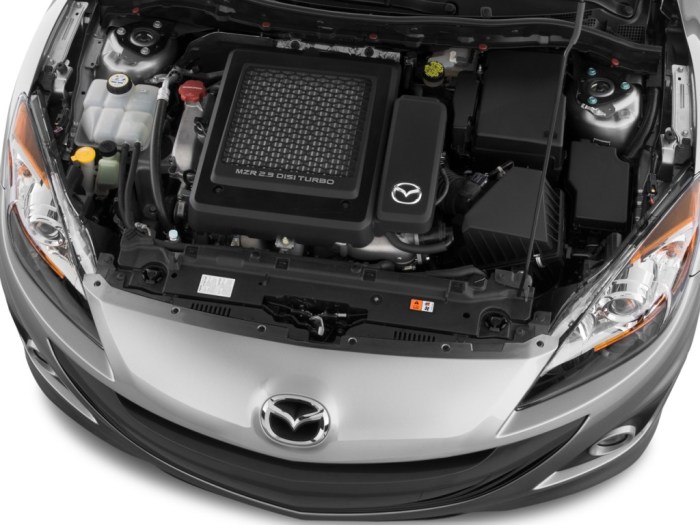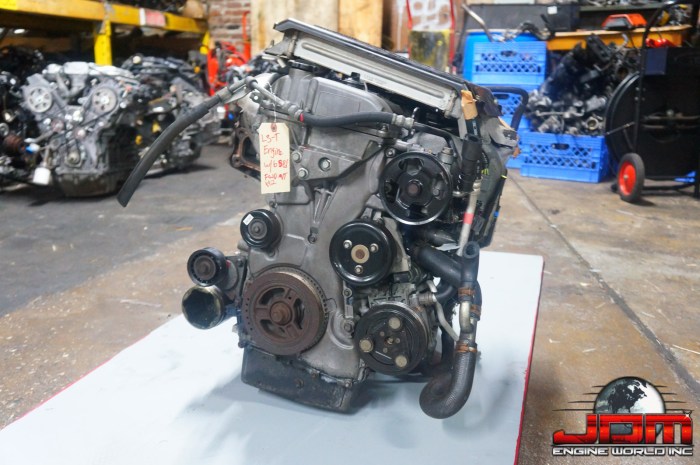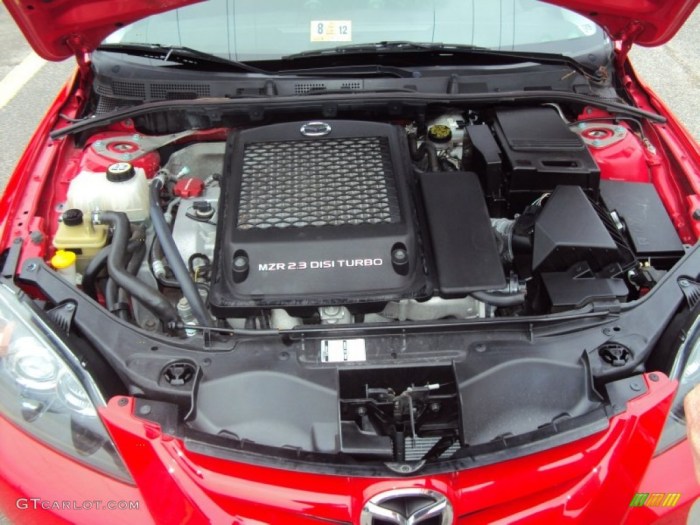Mazda Speed3 engine specs highlight the impressive capabilities of this compact powerhouse, designed for enthusiasts who crave performance and precision. With its turbocharged engine and innovative technologies, the Speed3 delivers an exhilarating driving experience that rivals many competitors in its class.
Find out about how BMW M4 Competition xDrive can deliver the best answers for your issues.
This comprehensive overview will delve into the main features of the Mazda Speed3 engine, examining its layout, technical specifications, performance metrics, and cutting-edge engine technology that sets it apart from the crowd.
Examine how Audi RS5 Sportback can boost performance in your area.
Overview of Mazda Speed3 Engine: Mazda Speed3 Engine Specs
The Mazda Speed3 engine has gained significant attention for its performance and engineering prowess. This high-performance variant of the Mazda3 features a turbocharged four-cylinder engine that delivers exhilarating power and responsiveness. With a focus on blending performance and practicality, the Speed3 engine has become a favorite among enthusiasts.
The engine layout is a 2.3-liter MZR DISI turbocharged inline-four configuration. This design allows for a compact form factor while providing ample power delivery. The turbocharger plays a crucial role in this engine’s performance, enhancing the air intake and allowing for increased power output without sacrificing efficiency. This combination of design and technology sets the Mazda Speed3 apart in the hot hatch segment.
Technical Specifications, Mazda Speed3 engine specs
The technical specifications of the Mazda Speed3 engine reflect its performance-oriented design. The engine produces an impressive horsepower rating of 263 hp at 5,500 RPM and torque figures of 280 lb-ft at 3,000 RPM. This powerful output translates into a thrilling driving experience, making the Speed3 one of the more spirited options in its class.
Key specifications include:
- Engine Displacement: 2.3 liters
- Compression Ratio: 9.5:1
- Fuel System: Direct fuel injection
- Type of Fuel: Premium unleaded fuel recommended for optimal performance
Performance Metrics
The Mazda Speed3 showcases impressive performance metrics, particularly in its acceleration capabilities. The vehicle can sprint from 0 to 60 mph in approximately 5.2 seconds, which is competitive within its class.
Braking distance is equally noteworthy, with the Speed3 achieving stops from 60 mph in about 120 feet. The handling characteristics are enhanced by its sport-tuned suspension and precise steering response, offering drivers a connected feel to the road. When compared with similar vehicles like the Ford Focus ST and Volkswagen GTI, the Mazda Speed3 holds its ground, often leading in acceleration and driver engagement.
Engine Technology and Features

The Mazda Speed3 is equipped with advanced engine technologies that enhance its performance. One of the standout features is the Direct Injection system, which improves fuel efficiency and power delivery by injecting fuel directly into the combustion chamber. This technology results in better combustion, leading to increased horsepower and torque.
Additionally, the variable valve timing (VVT) system optimizes engine performance across various RPM ranges, ensuring that the engine maintains efficiency while delivering power when needed. The cooling system plays a vital role in managing engine temperatures, preventing overheating during spirited driving and maintaining consistent performance levels.
Maintenance and Reliability

To ensure the longevity and reliability of the Mazda Speed3 engine, regular maintenance practices are essential. Recommended practices include:
- Frequent oil changes using high-quality synthetic oil
- Regular inspection and replacement of air filters
- Monitoring and maintaining the cooling system
Common issues that owners may encounter include carbon buildup in the intake system and water pump failures. Addressing these issues promptly can prevent more significant problems down the line. The expected lifespan of the Mazda Speed3 engine is substantial, with many owners reporting well over 100,000 miles with proper care and maintenance.
Modifications and Tuning Potential
The Mazda Speed3 is a popular choice among automotive enthusiasts looking to enhance performance through modifications. Common modifications include:
- Upgraded intercoolers to improve air intake temperatures
- Aftermarket exhaust systems for enhanced sound and performance
- ECU tuning for increased horsepower and efficiency
Tuning can significantly impact engine output, with potential increases in horsepower and torque. Many owners find that even minor modifications can lead to noticeable improvements in driving dynamics and responsiveness.
Comparative Analysis with Other Models
When comparing the Mazda Speed3 engine with its predecessor, the Mazda3, several differences emerge. The Speed3 features a turbocharged engine as opposed to the naturally aspirated options available in the standard Mazda3, resulting in a marked increase in performance and driving excitement.
In terms of competition, the Mazda Speed3 stands out against rivals such as the Ford Focus ST and Volkswagen GTI. While all three models offer spirited performance, the Speed3 is often praised for its engaging driving experience and unique turbocharged character. The combination of advanced technology and practical design makes the Mazda Speed3 an attractive option for those seeking a high-performance compact vehicle.
Last Word

In summary, the Mazda Speed3 engine combines robust performance with advanced technology, making it a standout option for those seeking a thrilling ride. Its blend of horsepower, torque, and innovative features not only enhance driving dynamics but also promise a fulfilling ownership experience for years to come.